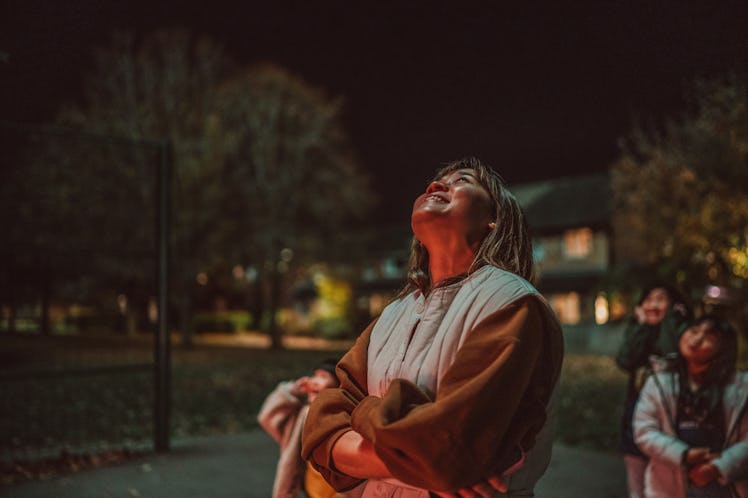This Distant, Dazzling Planet Is Brightening Up The Morning Sky
If you want to catch a glimpse of the planet, it’s actually its brightest in the morning sky right now.

Yes, there are meteor showers aplenty, and solar eclipses on the way. But in the meantime, there are smaller but more special shows to see in our skies that with just a little bit of know-how, we can experience just by looking up. Venus, for example, the second planet from the Sun in our solar system, is at its brightest in our sky right now, and it can be seen in the daytime. If you want to catch a glimpse of the planet, it’s brightest in the morning sky right now.
Venus is the brightest object in our sky after the moon and the sun, and right now, it’s easiest to see just after sunrise, reports EarthSky. Because of its current position relative to the sun and Earth, Venus will appear much brighter in the sky as its orbit starts to break away from the sun.
“Venus has been rising ever higher and has been getting a little brighter,” EarthSky explains. “It will attain its greatest brilliance on Sept. 19, appearing at an eye-popping magnitude of -4.8.”
This means that Venus is getting brighter and larger in our skies each day and will reach its brightest magnitude next week. That means that you can look at Venus for several hours — before sunrise to the east, and for several hours after sunrise, too, as it will stay bright in the morning sky.
Venus is an interesting planet. It actually goes through phases like the moon, and as it orbits the sun, it appears to move back and forth between the evening sky (when it's visible after sunset) and the morning sky (when it's visible before sunrise). The point in this cycle when Venus is farthest from the sun as seen from Earth is called its "greatest elongation,” which the planet will reach on October 23.
By the end of October, the planet will be “65 million miles away,” according to WhentheCurvesLineUp, and the planet will appear “35% smaller through a telescope.”
Here’s how to catch a glimpse of Venus in the sky with the kids
Around September 19, Venus will be brightest in the morning sky, which makes it the ideal day to go outside and take a look at the planet. At this time, the only thing that will be brighter in the sky than Venus will be the sun and the moon, so it’s relatively easy to spot, with the naked eye.
You can see the planet in the daytime, too, which is awesome for kids who want to see the planet but don’t want to wake up in the middle of the night. Some pre-school stargazing doesn’t sound all that bad, does it? But it’s important to remind the kids that looking at the sun is dangerous, so while you’re attempting to spot Venus, you need to take care that you’re not putting your eyes in danger. Staring directly at the sun can permanently harm your eyes. Don’t do it!
For the more invested amateurs, a telescope will make Venus easier to see, and you can see the changes of the planet through the month even more easily. “In a telescope, you can watch Venus begin September as a thin, tall crescent, then wax to 36% illuminated by month's end — while shrinking into the distance all the while,” EarthSky explains.
To find the best time and location for where to look for Venus in the September sky, you can check your location on The Sky Live or Stellarium. This will allow you to calculate the exact sunrise where you live so you can the kids can get the best view of the planet.
If you look in the direction of the sunrise but before the sun rises, the brightest starlike object in the sky is Venus. As the sun starts to poke above the horizon, you will still be able to spot Venus, but keeping track of the planet as the sun continues to rise can be tricky.
“To make it easier, position yourself so that Venus is placed in your sky in relation to a foreground object, such as a tree or utility pole,” EarthSky suggests. “When you spot Venus in daylight, it will be small and inconspicuous. If you look away and look back, it will be hard to find it again. It helps a lot if you have an object nearby, such as a tree or the moon.”